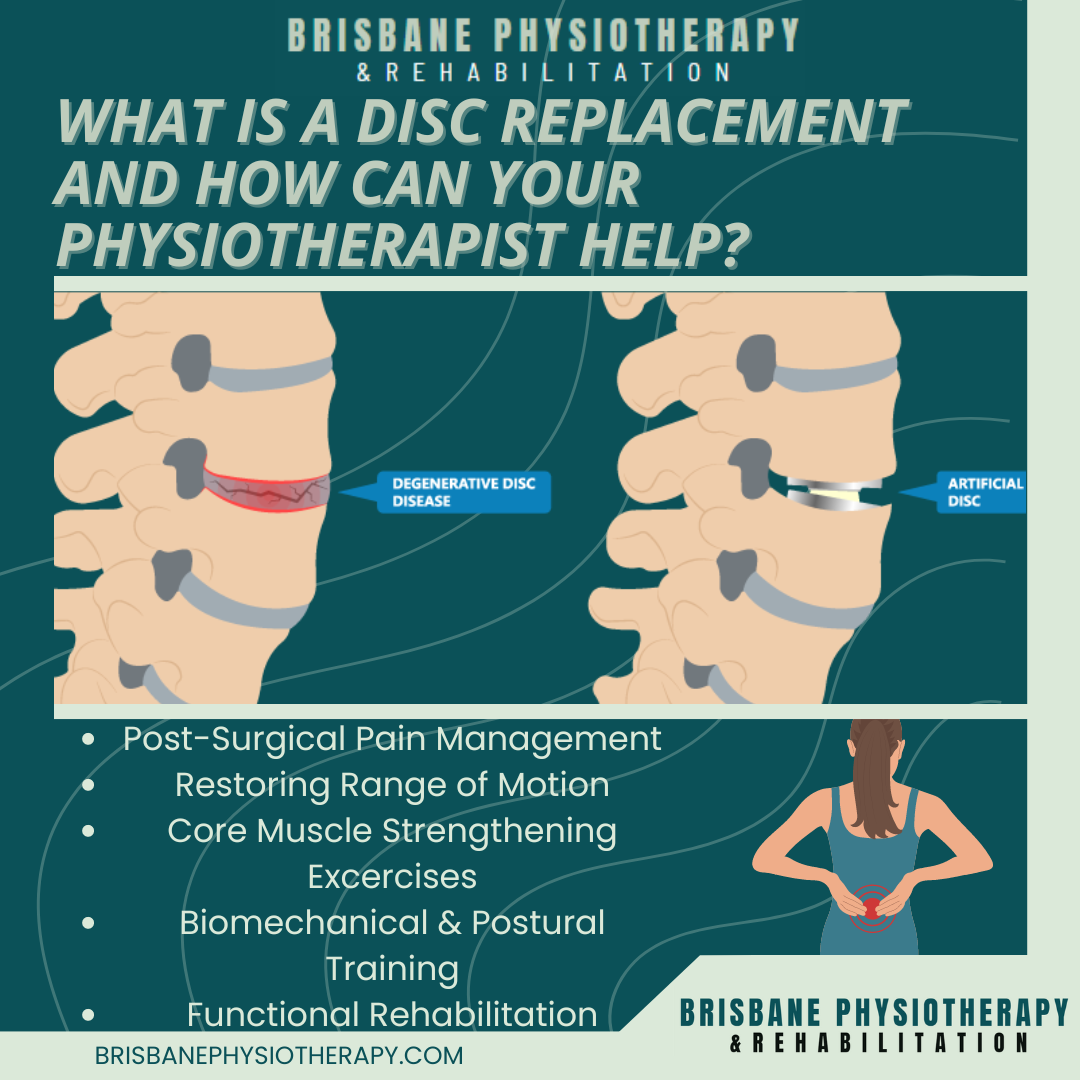
News & Articles

What are Facet Joint injections?
Facet joint injections are a specialised treatment to alleviate pain originating from the facet joints in the spine. These small joints are located between each vertebra and help provide stability and mobility to the spine. When inflamed or injured due to conditions like arthritis, degenerative changes, or trauma, facet joints can cause significant pain in the neck, back, and even radiating into the limbs. Facet joint injections offer a precise and minimally invasive way to manage this discomfort and improve mobility.

What is a Disc Replacement?
A disc replacement is a surgical procedure designed to alleviate chronic back pain caused by degenerated or damaged intervertebral discs, which are the cushion-like structures between the vertebrae in the spine. The procedure involves removing the damaged disc and replacing it with an artificial disc, which helps restore normal disc function and alleviate pressure on the spinal nerves. While disc replacement surgery can significantly reduce pain and improve mobility, a comprehensive rehabilitation program led by a physiotherapist is crucial for optimal recovery.

What is a Cheilectomy?
A Cheilectomy is a surgical procedure often performed to relieve pain and improve function in people suffering from hallux rigidus, a form of arthritis that affects the big toe. Over time, wear and tear or injury can lead to the development of bone spurs at the top of the big toe joint, limiting motion and causing discomfort. During a Cheilectomy, these bone spurs are removed to restore motion in the joint.

Cervical Fractures and Physiotherapy Treatment
Cervical fractures, also known as broken necks, involve a break in one of the seven vertebrae in the cervical spine (C1-C7). These fractures can occur due to high-impact trauma such as car accidents, falls, or sports injuries. Depending on the severity, cervical fractures can range from minor cracks to life-threatening injuries that may affect the spinal cord, leading to paralysis or even death. Prompt medical attention is crucial, and once stabilised, physiotherapy plays a vital role in recovery, helping patients regain mobility, strength, and function.

What is Calcific Tendonitis?
Calcific tendonitis is a painful condition caused by the buildup of calcium deposits in the tendons of the rotator cuff, most commonly in the shoulder. These deposits can lead to inflammation, pain, and restricted movement, making everyday activities difficult.

What is a Boutonniere Deformity
Boutonniere deformity is a hand condition that affects the fingers, characterised by a specific bending pattern where the middle joint (proximal interphalangeal joint) of the finger bends inward toward the palm, while the outermost joint (distal interphalangeal joint) bends outward. This deformity typically results from an injury to the extensor tendon, which runs along the back of the finger and is responsible for straightening it. Without proper treatment, Boutonniere deformity can lead to permanent finger deformity and impaired hand function. Physiotherapy is crucial in managing and treating this condition, helping patients regain hand function and prevent further complications.

Biceps Tears at the Shoulder and Physiotherapy Treatment
Biceps tears at the shoulder, also known as proximal biceps tendon tears, occur when the tendon that connects the biceps muscle to the shoulder becomes partially or completely torn. This injury often results from overuse, trauma, or degenerative changes, particularly in individuals engaged in repetitive overhead activities or heavy lifting. A biceps tear at the shoulder can cause pain, weakness, and a noticeable deformity in the upper arm, commonly referred to as a "Popeye" muscle. Physiotherapy is a key component in the rehabilitation process, helping patients regain strength, mobility, and function.

Anterior Cutaneous Nerve Entrapment Syndrome
Anterior Cutaneous Nerve Entrapment Syndrome (ACNES) is a condition where the anterior cutaneous nerves, which supply sensation to the abdominal wall, become compressed or irritated. This entrapment leads to chronic abdominal pain that can be sharp, burning, or aching in nature. ACNES is often misdiagnosed as other abdominal conditions due to its vague symptoms, but once correctly identified, it can be effectively treated. Physiotherapy plays a crucial role in managing and alleviating the pain associated with ACNES, helping patients regain their quality of life.

Anterior Cervical Discectomy
Anterior cervical discectomy (ACD) is a surgical procedure used to address issues related to the cervical spine, such as herniated discs, degenerative disc disease, or nerve compression. In this procedure, the surgeon removes the damaged or herniated disc through an incision in the front of the neck (anterior approach) to relieve pressure on the spinal cord or nerve roots. Sometimes, a fusion or artificial disc replacement follows the discectomy to stabilise the spine. While the surgery is effective in alleviating pain and neurological symptoms, post-operative physiotherapy is essential for a full recovery.

Ankle Fusion surgery
Ankle fusion, also known as ankle arthrodesis, is a surgical procedure often performed to relieve severe arthritis, correct deformities, or stabilise an unstable ankle. During the procedure, the bones in the ankle joint are fused together using screws, plates, or rods, eliminating the joint entirely. While this surgery can significantly reduce pain and improve stability, it also results in a loss of motion in the ankle. Consequently, the role of a physiotherapist is crucial in the rehabilitation process following an ankle fusion.